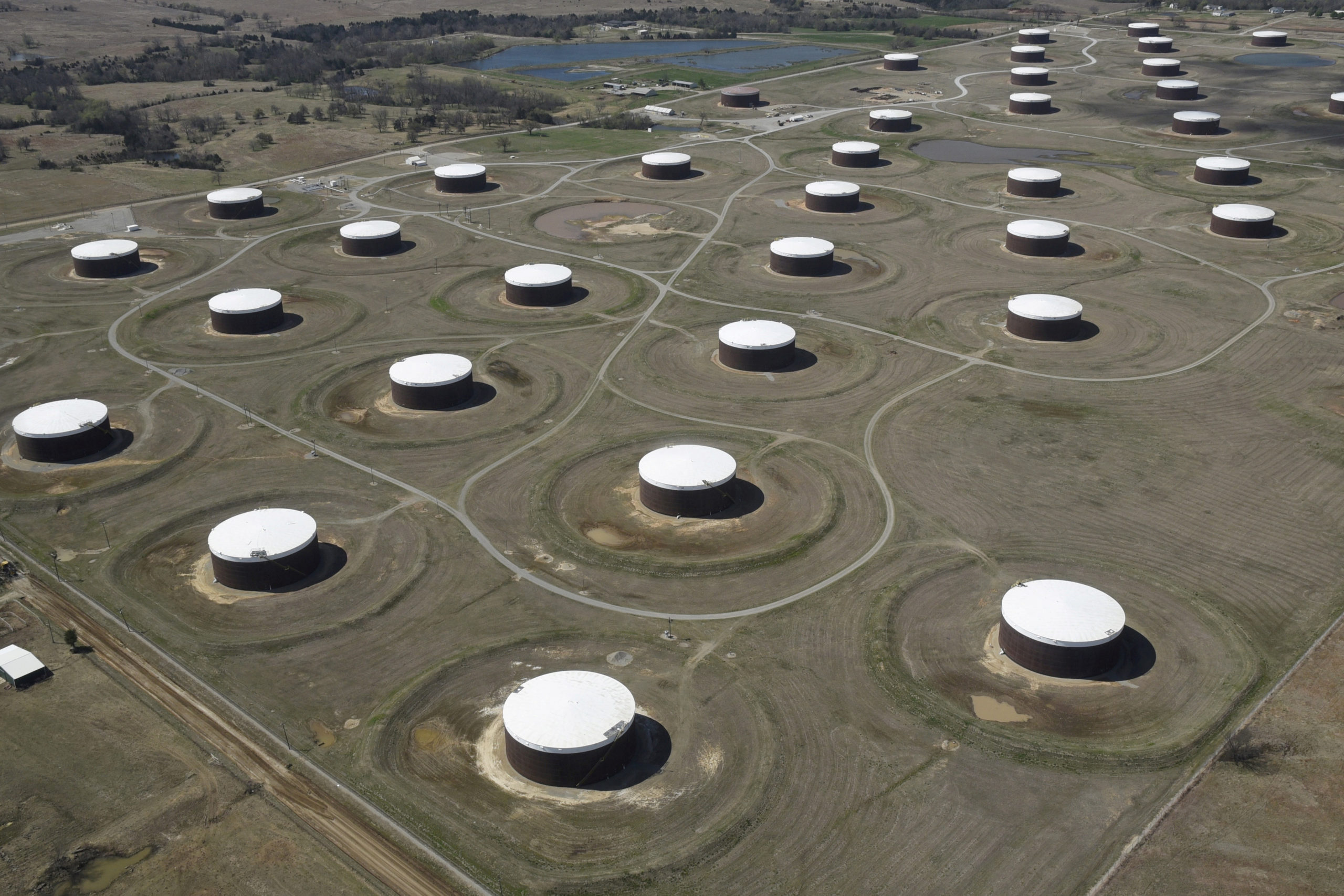
FILE PHOTO: Crude oil storage tanks are seen from above at the Cushing oil hub, in Cushing, Oklahoma, March 24, 2016. REUTERS/Nick Oxford/File Photo
NEW YORK — Oil prices rose on Friday, up more than 4% on the week as a global energy crunch has boosted prices to their highest since 2014 and prompted China to demand increased coal production.
With global energy demand growing, OPEC and allied producers have said they would stay the course of gradually bringing back production cuts, and while the U.S. government said it was monitoring energy markets, it did not announce immediate plans for actions to lower prices.
U.S. benchmark West Texas Intermediate crude touched a high above $80 a barrel briefly.
“Oil prices are surging as the U.S. Department of Energy has backed off from plans that could curb prices by releasing SPR crude oil and banning U.S. crude exports,” said Phil Flynn, senior analyst at Price Futures Group in Chicago. “There’s not a lot of risk to being long” with bullish bets on oil futures, he said.
Energy markets have tightened in the face of improved fuel demand as economic activity rebounds from pandemic lows, and many fear that a cold winter could further strain natural gas supplies. China ordered miners in Inner Mongolia to ramp up coal production to alleviate its energy crunch.
“As other energy prices like natural gas and coal keep pushing higher, upside risks to the oil market have started to build,” said Bank of America’s Christopher Kuplent.
Brent crude futures rose 62 cents, or 0.6%, to $82.56 a barrel by 12:20 p.m. Eastern (1620 GMT) while U.S. West Texas Intermediate (WTI) crude futures rose $1.02 or 1.3% to $79.31 after briefly touching a session high of $80.11 a barrel, surpassing a nearly seven-year high of $79.78 touched earlier this week.
Earlier in the week, Brent hit a three-year high of $83.47.
The price run-up has been spurred by soaring European gas prices, which have encouraged a switch to oil for power generation, and a decision by the Organization of Petroleum Exporting Countries (OPEC) and allies led by Russia to stick to plans to add only 400,000 barrels per day (bpd) of supply in November.
Benchmark European gas prices at the Dutch TTF hub on Friday stood at a crude oil equivalent of about $200 a barrel, based on the relative value of the same quantity of energy from each source, according to Reuters calculations based on Eikon data.
“An acceleration in gas-to-oil switching could boost crude oil demand used to generate power this coming northern hemisphere winter,” an ANZ commodities analyst said in a note.
ANZ increased its 2021 fourth-quarter crude oil demand forecast by 450,000 bpd.
The U.S. Department of Energy (DOE) said that all “tools are always on the table” to tackle tight energy supply conditions, which could include a release of oil stocks.